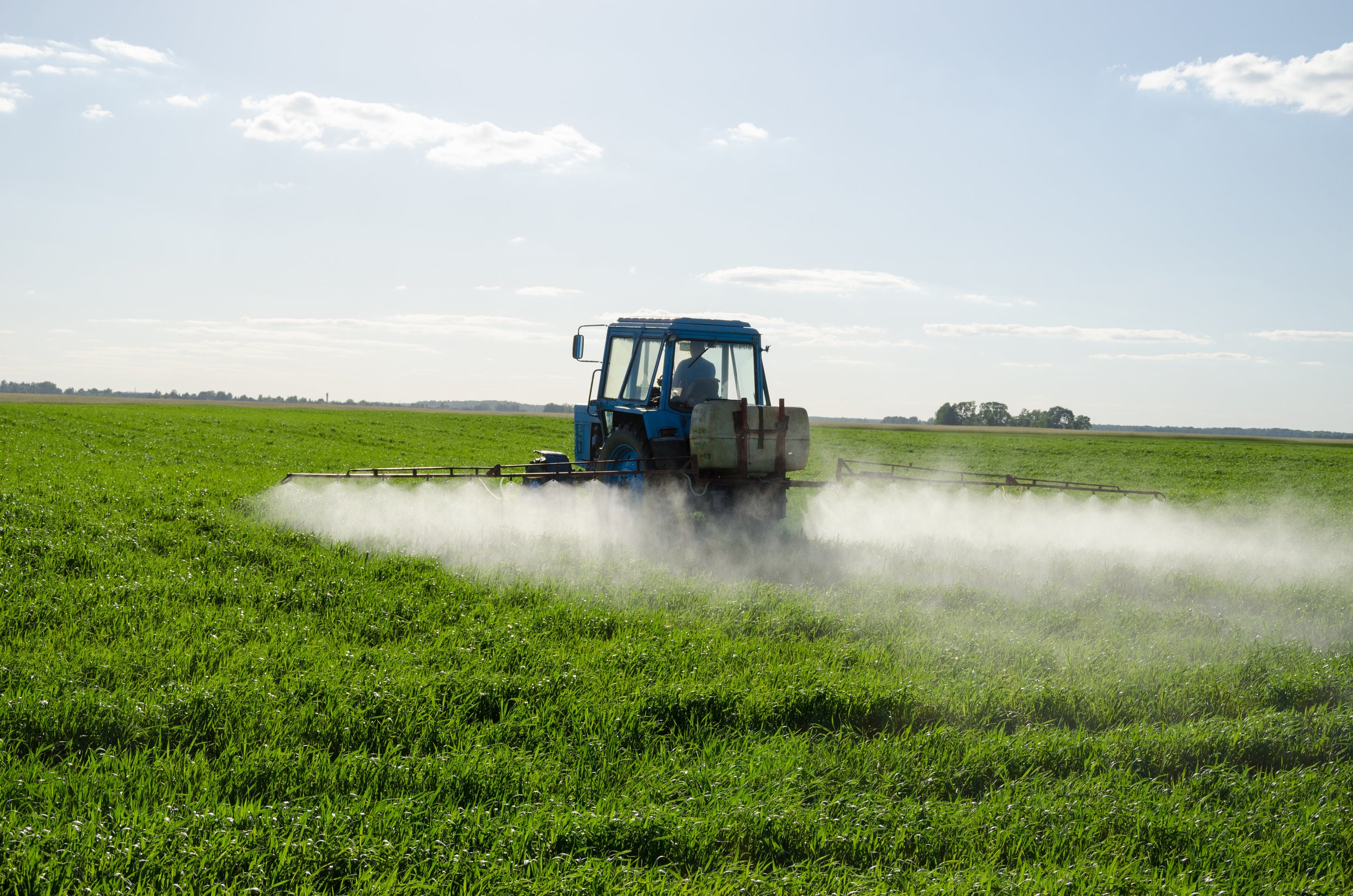PREPARE YOUR SITE
Site Prep Options Repeated Tilling Herbicide Smothering
Herbicide
Editor’s Note: Herbicide treatment is a common tool in ecological restoration, but its use is contentious. Herbicides can pose risks to human and environmental health especially if not applied appropriately. If you are considering herbicide use, we strongly recommend consulting a professional (such as your local Cornell Cooperative Extension office, or a certified herbicide applicator or invasive species manager) to explore all possible site prep options and help decide if herbicide is appropriate for your site. All herbicides must be applied by a licensed applicator with appropriate protective equipment, according to the label instructions.
Herbicides are chemicals that kill plants. They can be used to prepare sites of any size for planting by killing existing vegetation, as well as weeds that germinate after the initial treatment. Herbicides can be applied once or multiple times in site preparation. Herbicides are different from pesticides, which are formulated specifically to kill insects; however, some herbicide components can also be toxic to insects or other forms of life. Herbicide treatment is not suitable for certain areas, such as sites near wetlands or special natural communities. It’s important to weigh the benefits and risks of herbicide application for your specific site.
Where it can be appropriate:
Sites that are being transitioned from conventionally managed agriculture and have already been subject to herbicide and other chemical application. Here, the use of additional herbicides to prepare the site for a permanent native planting is unlikely to damage anything that hasn’t already been damaged.
Areas that have existing populations of invasive species that spread via rhizome (root fragments), such as mugwort, which are difficult to prepare using tillage or tarping.
Areas too large for tarping that also have steep slopes or other considerations that make tillage unworkable; or on large-scale sites where the land manager considers that the negative impacts of tillage (such as damage to soil life, loss of soil carbon, and erosion) are of greater concern than the potential negative effects of herbicide treatment.
Choosing an herbicide:
Systemic, nonselective herbicides are the best herbicides for site preparation. A professional applicator should always be engaged to determine the most appropriate chemical within that category based on site conditions. Common chemicals include:
Glyphosate - this is one of the most widely available herbicides. Glyphosate is commonly marketed under the brand name Roundup, a formulation which includes other chemicals in addition to glyphosate. Some of these extra ingredients, such as surfactants, have been shown to be directly toxic to bumble bees. Be sure to work with a professional who can apply the active ingredient (glyphosate) alone, rather than using Roundup products.
Recently, some organic herbicides are emerging as options for meadow preparation. They were not used by our pilot sites and so are beyond the scope of this guide, but you can learn more from a local professional or Cornell Cooperative Extension service.
Method and Timing of Herbicide Application
To prepare a field for fall planting or meadow seeding, the first herbicide application should take place in late May or early June, once there is significant spring growth of existing vegetation. Mow the area as low as possible before the first herbicide application.
Herbicide sprays should take place on a calm day to minimize spray drift, and at a time with no rain in the immediate forecast, to minimize the potential for runoff and maximize the treatment’s effectiveness.
Repeat the herbicide application every 3-4 weeks as needed if vegetation grows back. One application may be sufficient, or up to three or four total applications may be needed. The number of applications needed will depend on factors including the type and density of the existing vegetation; weather conditions at spraying time; and the type and concentration of chemical used.
If there is widespread regrowth of vegetation after a treatment, mow the area as low as possible before the next herbicide application.
The final application should take place 3-4 weeks before planting or seeding and while any remaining vegetation is still growing actively, typically mid- to late-August.
Do not disturb or till the soil after herbicide applications; this can bring new weed seeds to the surface and nullify the herbicide’s work.

